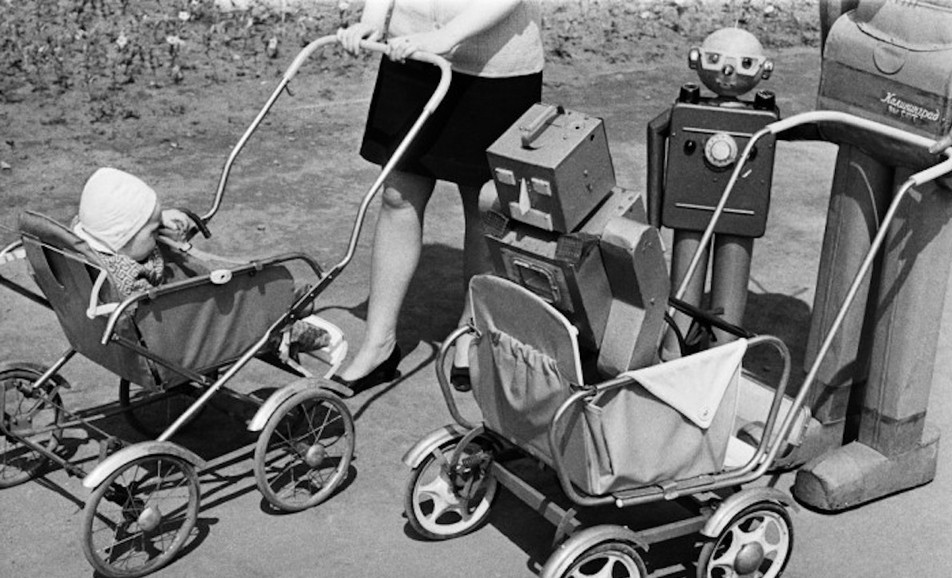Weak AI is going to continue to proliferate throughout the world, its laser focus on narrow tasks improving production and having major economic ramifications good and bad. But what of Strong AI? When will these rough beasts be “born,” their hour come round at last? From Diane Ackerman’s Salon profile of Cornell University roboticist Hod Lipson:
“What’s the next hack for a rambunctious species full of whiz kids with digital dreams? Lipson is fascinated by a different branch of the robotic evolutionary tree than the tireless servant, army of skilled hands, or savant of finicky incisions with which we have become familiar. Over ten million Roomba vacuum cleaners have already sold to homeowners (who sometimes find them being ridden as child or cat chariots). We watch with fascination as robotic sea scouts explore the deep abysses (or sunken ships), and NOAA’s robots glide underwater to monitor the strength of hurricanes. Google’s robotics division owns a medley of firms, including some minting life-size humanoids—because, in public spaces, we’re more likely to ask a cherub-faced robot for info than a touchscreen. Both Apple and Amazon are diving into advanced robotics as well. The military has invested heavily in robots as spies, bionic gear, drones, pack animals, and bomb disposers. Robots already work for us with dedicated precision in factory assembly lines and operating rooms. In cross-cultural studies, the elderly will happily adopt robotic pets and even babies, though they aren’t keen on robot caregivers at the moment.
All of that, to Lipson, is child’s play. His focus is on a self-aware species, Robot sapiens. Our own lineage branched off many times from our apelike ancestors, and so will the flowering, subdividing lineage of robots, which perhaps needs its own Linnaean classification system. The first branch in robot evolution could split between AI and AL—artificial intelligence and artificial life. Lipson stands right at that fork in that road, whose path he’s famous for helping to divine and explore in one of the great digital adventures of our age. It’s the ultimate challenge, in terms of engineering, in terms of creation.
‘At the end of the day,’ he says with a nearly illegible smile, ‘I’m trying to recreate life in a synthetic environment—not necessarily something that will look human. I’m not trying to create a person who will walk out the door and say ‘Hello!’ with all sorts of anthropomorphic features, but rather features that are truly alive given the principles of life—traits and behaviors they have evolved on their own. I don’t want to build something, turn it on, and suddenly it will be alive. I don’t want to program it.'”
Tags: Diane Ackerman, Hod Lipson

